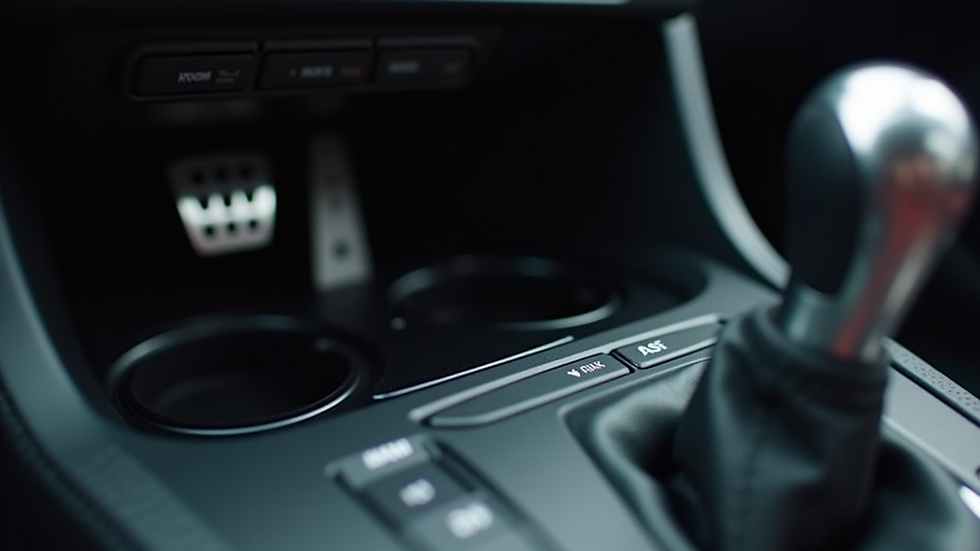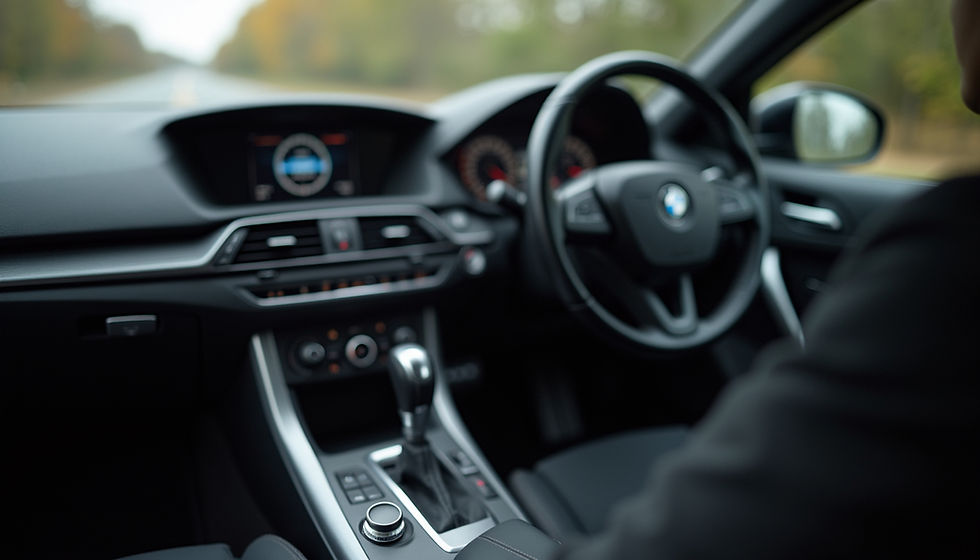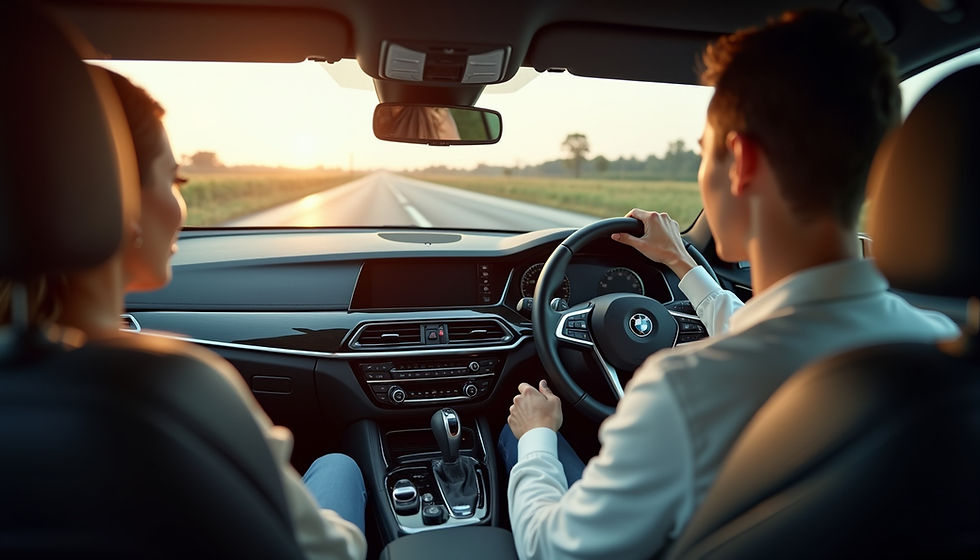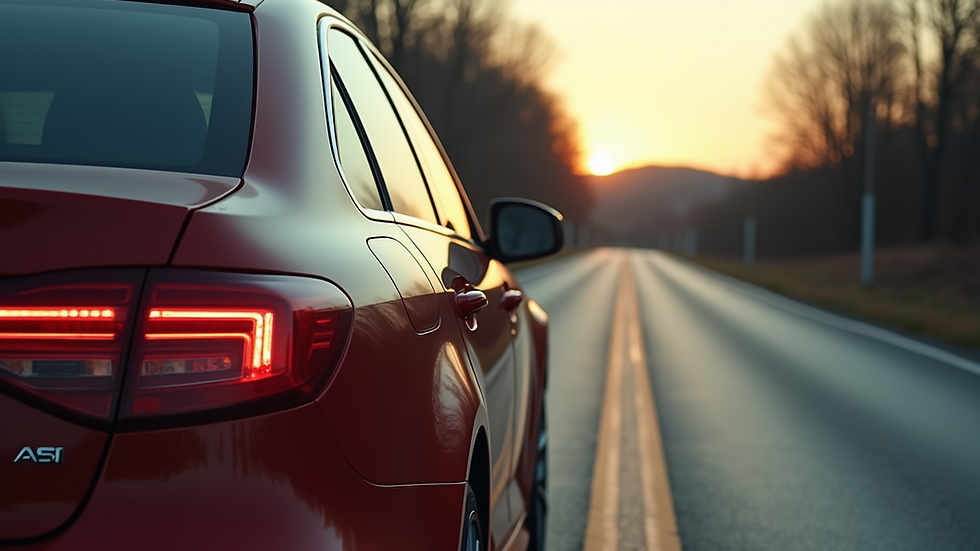Essential Tips for Driving a Manual Transmission Car
- Adrian Fedyk

- Sep 17
- 5 min read
Updated: 13 hours ago
Learning to drive a manual transmission car can feel like a big challenge at first. But trust me, once you get the hang of it, it’s incredibly rewarding. You gain more control over your vehicle, and it can even make driving more fun. Whether you’re just starting out or brushing up on your skills, I’m here to guide you through some essential tips that will make your manual lessons smoother and more enjoyable.
Essential Tips for Driving a Manual Transmission Car: What You Need to Know
Starting your manual lessons can be exciting and a bit nerve-wracking. The key is to take it step by step. First, get familiar with the basic controls: the clutch, gear stick, accelerator, and brake. The clutch pedal is the one on the far left, and it’s the one that makes manual driving unique. Pressing it down disconnects the engine from the wheels, allowing you to change gears.
When you’re ready to move off, press the clutch fully, shift into first gear, and slowly release the clutch while gently pressing the accelerator. This is where many beginners stall the car, but don’t worry - it’s completely normal. The trick is to find the “biting point” where the clutch starts to engage. Practice this in a quiet, flat area until it feels natural.
Here are a few essential tips for driving a manual transmission car to keep in mind during driving a manual car:
Always press the clutch fully before changing gears.
Don’t rush the clutch release; smoothness is key.
Use the handbrake when starting on hills to avoid rolling back.
Listen to the engine sound to know when to change gears.

Getting familiar with the clutch and gear stick is the first step in manual driving.
Why Manual Lessons Are Worth Your Time
You might wonder what are the essential tips for driving a manual transmission car when automatic cars are so common. Well, manual driving offers several benefits that make it worthwhile. For one, manual cars are often cheaper to buy and maintain. They also tend to have better fuel efficiency, which can save you money in the long run.
More importantly, learning to drive a manual car improves your overall driving skills. You become more aware of how the car works and develop better control, especially in tricky situations like steep hills or slippery roads. Plus, if you ever travel abroad, manual cars are more common in many countries, so you’ll be ready to drive anywhere.
If you’re serious about mastering manual driving, consider enrolling in professional manual car driving lessons. A qualified instructor can provide personalised guidance and help you build confidence quickly.

Manual lessons help you understand the car’s controls and improve your driving skills.
How many driving lessons do I need manually?
One of the most common questions I get is, “How many driving lessons do I need to learn manual driving?” The answer varies depending on your experience, confidence, and how often you practice. On average, learners might need between 20 to 30 hours of professional lessons to feel comfortable driving a manual car independently.
However, some people pick it up faster, especially if they have some experience with clutch control or have practiced with a friend or family member. Others might need more time to master smooth gear changes and hill starts. The key is consistency - regular practice helps build muscle memory and confidence.
When you start your lessons, your instructor will assess your skills and tailor the sessions to your needs. Don’t be discouraged if you don’t get it right away. Everyone learns at their own pace, and with patience, you’ll get there.

Regular practice during manual lessons helps build confidence and skill.
Tips for Smooth Gear Changes and Hill Starts
One of the trickiest parts of driving a manual car is mastering smooth gear changes and hill starts. Here are some practical tips that helped me and can help you too:
Smooth Gear Changes: Always press the clutch fully before shifting gears. Don’t rush the movement; shift the gear stick gently into the next gear. As you release the clutch, gradually press the accelerator to avoid jerking.
Listening to the Engine: The engine sound is your best guide. When the engine revs too high, it’s time to shift up. If it sounds like it’s struggling, shift down.
Hill Starts: Use the handbrake to prevent rolling back. Press the clutch and shift into first gear, then slowly release the clutch until you feel the biting point. At this moment, release the handbrake and press the accelerator gently.
Practice Makes Perfect: Find a quiet hill or slope to practice hill starts repeatedly. The more you do it, the more natural it will feel.
Remember, every driver stalls sometimes, especially when learning. Don’t let it shake your confidence. Keep calm, try again, and you’ll improve with each attempt.
Common Mistakes to Avoid When Learning Manual Driving
Learning manual driving comes with a few common pitfalls. Being aware of these can save you frustration and help you progress faster.
Riding the Clutch: This means keeping your foot partially on the clutch pedal while driving. It causes unnecessary wear and can damage the clutch. Always fully press or fully release the clutch.
Shifting Gears Without Clutch: Some beginners try to change gears without pressing the clutch fully. This can damage the gearbox. Always use the clutch properly.
Stalling Frequently: While stalling is normal, frequent stalls might mean you’re releasing the clutch too quickly or not giving enough gas. Slow down your clutch release and add a bit more accelerator.
Ignoring the Handbrake on Hills: Not using the handbrake on a hill start can cause the car to roll back, which is scary and unsafe. Always use the handbrake until you’re ready to move.
Not Practicing Enough: Manual driving requires muscle memory. Without regular practice, it’s easy to forget the steps or lose confidence.
By avoiding these mistakes, you’ll find your manual lessons more productive and less stressful.
Keep Practicing and Enjoy the Journey
Driving a manual car is a skill that opens up new possibilities. It might seem tricky at first, but with patience and practice, you’ll get there. Remember to take your time, listen to your instructor, and don’t be afraid to ask questions. Every driver was once a beginner.
If you want to speed up your learning, consider booking professional manual car driving lessons. They provide structured learning and personalised feedback that can make a big difference.
Enjoy the process, celebrate your progress, and soon you’ll be confidently driving a manual car wherever you go!

With practice, driving a manual car becomes second nature and enjoyable.








Comments